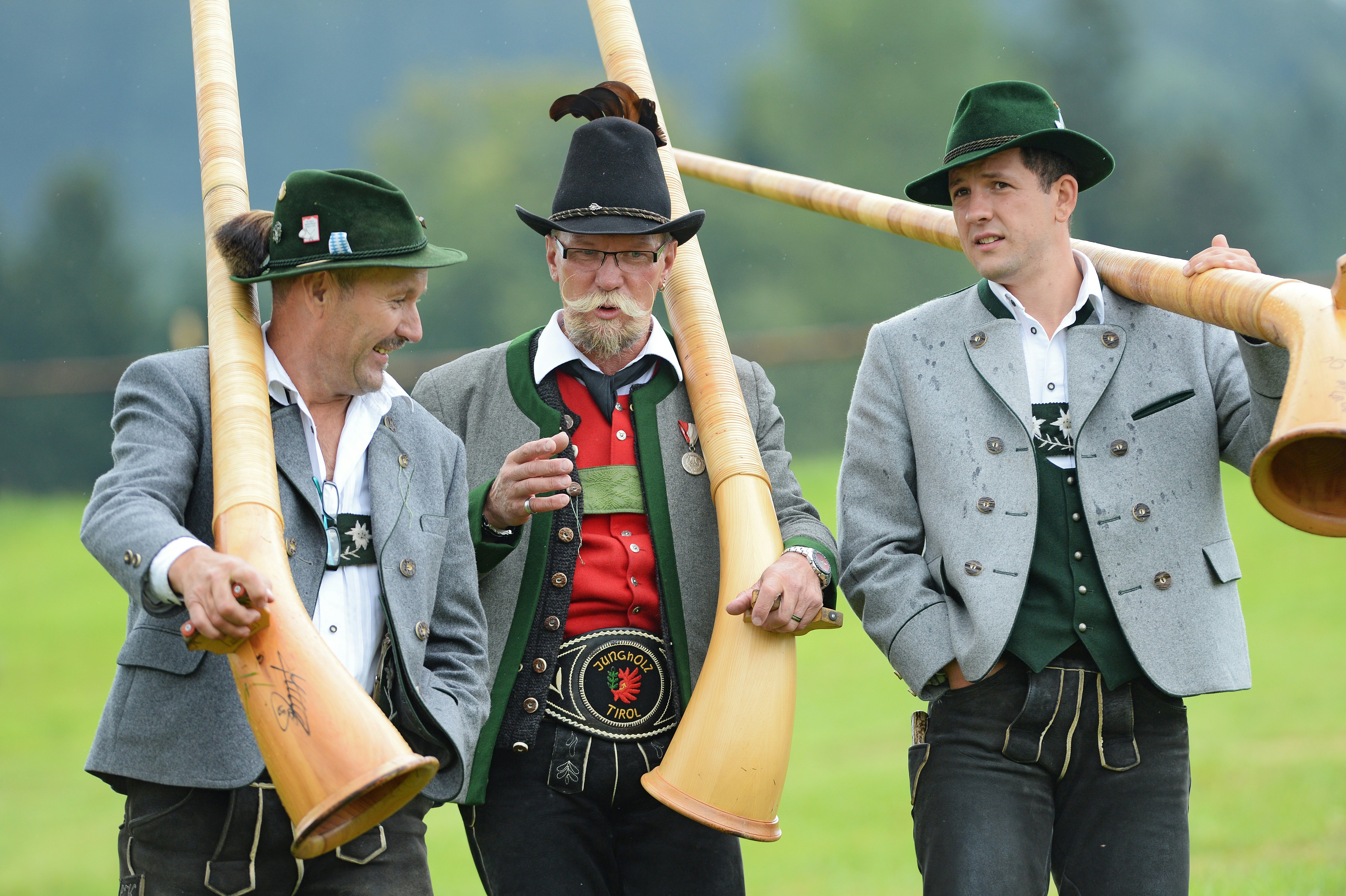
The 30 best countries, cities and regions to visit in 2025

Strict etiquette rules govern a Schwingen competition, read on to learn more © Urs Flueeler / EPA / Shutterstock
It was at the Unspunnen festival in Interlaken in 2017 when I really became aware of just how important Schwingen – or Swiss wrestling – is in Switzerland.
I’d spent the afternoon sitting in the packed stands of a sports arena watching burly men in jute shorts attempt to throw each other onto the ground in a series of one-on-one competitions held in a sawdust-covered ring. The rules were bemusing, the crowd was riveted, and the whole thing culminated in the eventual winner being presented with a prize bull called Gottlieb. What, I asked myself, had I just watched?
Later on, I was invited to the press lounge of one of the festival’s big sponsors, a major watch brand, to meet a previous national champion, or Schwingerkönig (king wrestler). Matthias Sempach, a stacked, 194cm-tall thirty-something, was ushered over by the PR person of said watch brand – of which Sempach was an ambassador – after signing some autographs and having his photograph taken. And it was then that I realised: Schwingen isn’t just a quirky traditional Swiss custom, like, say, Morris dancing in the UK, it’s a modern, wildly popular sport and its champions are media stars.
Schwingen sprung up in farming communities across alpine regions but, like most traditions with rural origins, it’s unclear exactly when. There’s a 13th century carving in Lausanne cathedral which may depict Swiss wrestling, although experts aren’t convinced that it’s not just regular wrestling. Documents from the later Middle Ages reveal that the sport was in (ahem) full swing by then, as towns and cities developed a penchant for alpine culture and staged Schwingen competitions at fairs and festivals.
In 1805 the sport became one of the main centrepieces of the first Unspunnen festival (so-called because it was held next to the ruins of Unspunnen castle near Interlaken), a celebration of Swiss alpine culture devised to ease tensions between city folk and rural people – and to stick two fingers up to the French after Napoleon’s bloody invasion.
In the late 19th century the first national championships were held in the form of the Eidgenössisches Schwing und Älplerfest (Federal Swiss Wrestling and Alpine Festival), now the sport’s biggest event, held every three years. The Eidgenössischer Schwingerverband (ESV, or Federal Wrestling Federation) was created around the same time.

You won’t find too many Schwingen clubs or competitions in Francophone or Italian-speaking parts of the country, but in Swiss German-speaking areas Hosenlupf or "breeches lifting" (as it’s colloquially known) is a firm fixture on the sporting calendar, with its major events attracting many thousands of spectators.
Numerous Schwingen events held in towns and villages throughout the year, including youth competitions and regional festivals (take your pick from ESV’s agenda), but to see the sport at its most celebrated head to one of the biggest ones – if you can get tickets, that is, as they often sell out far in advance.
Top competitors are well-known here, and although it’s still an amateur sport they pick up lucrative sponsorship deals that even tennis champ and Swiss darling Roger Federer wouldn’t take lightly.
Shorts are crucial to the sport. Each player wears Schwingerhosen over their trousers, wrestling shorts made of jute and held up by a leather belt. During a bout, which lasts around five minutes, both competitors must grip the back of their opponent’s shorts as they use a series of set trips, grips and throws (there are more than 100 to choose from) to try and fling them to the ground. The bout ends when the losing player’s two shoulders touch the sawdust inside the playing circle.
Points are given per bout, and the whole thing is adjudicated by a referee and two additional judges, who also decide who should compete against whom. The overall winner is the wrestler who picks up the most points, and his prize at the biggest events is usually a Muni (a young bull), who dutifully poses for photos before returning to his pasture.
Women’s Schwingen was introduced in 1980 and there’s now an active circuit of events for women and girls, managed by the Eidgenössischer Frauenschwingverband (Women’s Schwingen Association). However, Schwingen is still predominantly a men’s sport, played by towering figures with eye-watering vital statistics. Current national champ, Joel Wicki, at 1.83m (6ft) is considered on the small side. The top guys are called Die Bösen (the bad boys, or wicked ones), and their achievements are captured annually in the ESV’s official yearbook and pin-up style calendar.

You only need sit in the stands at a Schwingfest (wrestling festival) to know that this is a sport that’s highly respected by both players and fans. That’s not to say it’s not fun; on the contrary, crowds can be lively and the atmosphere is family-friendly and harmonious, but they take it as seriously as a die-hard Liverpool fan at a home game. People attend out of love and pride for this Swiss national sport, often to cheer on their local club members, who will have trained intensively to be there.
Strict etiquette rules also govern the competition: opponents must shake hands at the beginning of the bout, and the eventual winner always wipes the sawdust from the loser’s back as a mark of respect.
The Federal Swiss Wrestling and Alpine Festival, where the national champion is crowned Schwingerkönig, is held in a different location every three years. It’s a huge affair – at the last one in Pratteln in 2022 the games were held in a specially-built 50,000-seat arena and around 400,000 people attended over the two days. While Schwingen is the centrepiece, the festival also stages two other Swiss sports: Steinstossen (stone-throwing), a sort of Swiss shot-put in which competitors see how far they can chuck boulders of various weights; and Hornussen, a golf-lacrosse-cricket hybrid which frankly has to be seen to be understood – and even then it might take you a while. Alpenhorn players, yodellers and flag wavers complete the festival entertainment. If you’ve ever been to a Highland Games in Scotland, then give it a Swiss spin and you’ll get the idea.
The Olympics of alpine sports, if you like, is Unspunnen (or the Swiss Wrestling, National Costume and Alpine Herdsmen’s Festival), which is held only once every 12 years in Interlaken. Between the vast opening parade of people in traditional dress and the celebratory yet solemn closing ceremony and around ten days later, the festival dedicates each day to a traditional alpine sport, including Schwingen.
The festival’s symbol is the Unspunnen stone, a boulder weighing a hefty 83.5kg, which is used in the stone-throwing competition. It’s not the original stone, whose whereabouts is still a mystery after it was stolen for the second time in 2005. Before the last festival in 2017 organisers made a very polite plea for its safe return, promising to open a good bottle of wine to whomever brought it home.

Considering 12 years a bit too long to wait, the Unspunnen organisers hold another Schwingen competition every six years, the Unspunnen-Schwinget. This and a similar event, the Kilchberger Schwinget, have nearly as much history as the two big ones, but both are primarily for long-time loyal fans, with tickets distributed only to members of Schwingen clubs. If you don’t have connections, try the Schwing & Älplerfest Schwarzsee (Alpine Wrestling Festival Schwarzsee), near bilingual Fribourg on the Röstigraben language border, the only official Schwingfest in south-west Switzerland.
With club members of the Federal Wrestling Federation getting a hefty ticket allocation at all the big events, what’s left for Joe Public tends to sell out pretty sharpish. So if you want to see Schwingen at the next federal festival in Glarus in 2025, or at Unspunnen in 2029, you’d best put the on-sale date in your diary now and get on the case with Glastonbury-like swiftness. However, if you end up without tickets for the playing arena, it’s still worth going along to soak up the festival atmosphere and watch the action on the big screens outside. Alternatively, there’s always the telly, since these events are covered by Swiss national broadcaster SRF/RTS.
If you want to look the part, get yourself a typical blue shirt embroidered with alpine flowers, as originally created by the Jenni brand in the 1970s but now on sale at numerous outlets all over the country. They’re widely worn at any Swiss alpine festival – including by some Swiss wrestlers in competition – and have become a symbol of pride in rural life and farming culture. Team it with a glass of Swiss wine and a platter of Älpkase (alpine cheese) and you’ll fit right in.
A two-time Schwingerkönig, Karl Meli was one of the greatest Swiss wrestlers of the 20th century. His daughter and fellow wrestler Irene Bodenmann-Meli established a small museum dedicated to the sport and her father’s long career in their hometown of Winterthur, but on her death in 2019 the Meli memorabilia was gifted to the Swiss Open-Air Museum in Ballenberg. This forms the basis of its special exhibition: ‘Who wears the trousers? Schwingen – the Swiss wrestling tradition’ which delves into Schwingen’s history and cultural significance through items including trophies, wreaths and, of course, the essential Schwingerhösen.
Plan with a local
